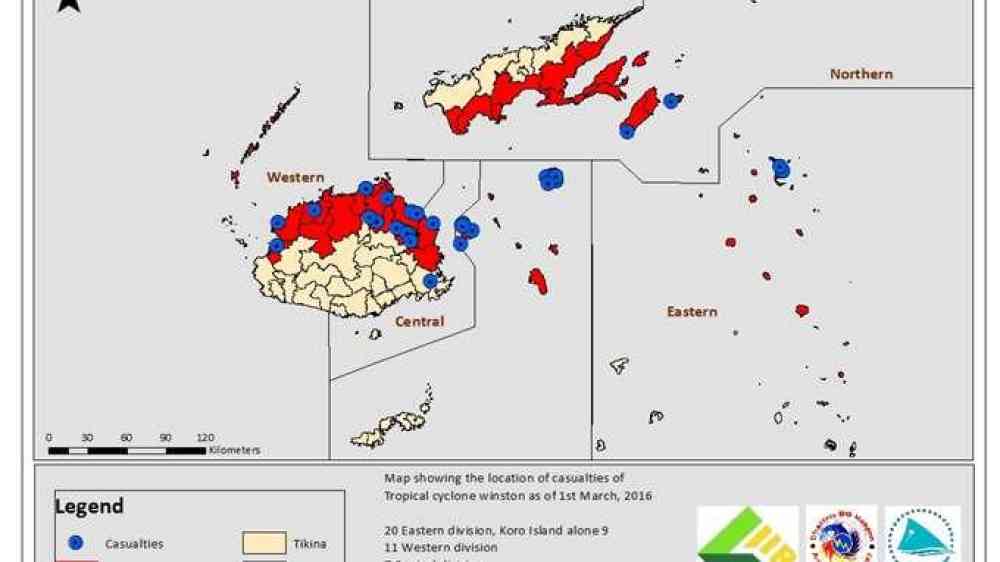
Coastal hazard experts from the Pacific Community (SPC) have surveyed wind and wave damage from tropical cyclone Winston in more than 40 communities across the provinces of Bua, Cakaudrove, and Lomaiviti in Fiji last week, producing detailed data that will have immediate and long-term benefits for Fiji and the region.
As part of SPC’s assistance to the Government of Fiji following the devastating category 5 cyclone, two teams of oceanographers and damage assessment specialists designed and carried out simultaneous surveys, covering roughly 250 km of coastline over five days.
Planned in collaboration with Fiji’s National Disaster Management Office (NDMO) and Mineral Resource Department and with support from the World Bank, the surveys assessed building damage, the status of water and sanitation, and the extent of coastal inundation on the island of Ovalau and the southern coast of Vanua Levu.
In Ovalau, the highest recorded wave run-up was more than seven metres high at the Ovalau Holiday Resort – almost as tall as a three-story building.
The worst affected areas of Vanua Levu were in the Kubulau District of Bua and along the coast from Savusavu to Naweni, where the wave run-up reached five metres in the village of Nukubalavu, and the maximum inundation extent recorded was 183 metres inland in Tacilevu Village.
“This is the most comprehensive building damage data set that exists for any cyclone in the Pacific to date,” SPC Deputy Director-General, Dr Audrey Aumua, said.
“It will be used as a regional baseline for future damage assessments and to better predict inundation and wind impact on buildings.”
Provincial Administrators are already applying SPC’s assessment results to guide their ongoing response to the most affected communities in their districts.
In addition to the value they provide for Fiji, the survey results – progressively available on SPC’s Cyclone Winston Spatial Data Resources Portal http://gsd.spc.int/winston/ – also have regional applications.
“These field surveys were critical because we can’t perform detailed building damage and wave run-up analysis using aerial photos alone,” Dr Aumua said.
“The survey also serves to ground-truth damage assessments our Suva-based staff are doing using satellite imagery,” she added.
Inundation extent is a measure of the distance the water reached inland, while wave run-up is a measure of the height of the waterline above normal sea level.
The teams gathered inundation and wave run-up data via systematic measurement of water depth marks on buildings and the location of inland debris, corroborated with eye-witness accounts.
Building and water system characteristics were analysed to determine the cause of damage (wind, wave or both) and to highlight the key features of structures that withstood the storm.
“In the short term, the data will be used to produce hazard maps that will feed directly into the Fiji government-led post-disaster needs assessment,” Dr Aumua explained.
“In the long term, we gain a better understanding of the impacts of events like this, including informing how can we build back safer and stronger, and improve future coastal planning to minimise disaster impacts.”
The eight SPC experts who conducted the surveys were: Cyprien Bosserelle, Deepika Lal, Joy Papao, and Keleni Raqisia in Ovalau and Herve Damlamian, Zulfikar Begg, Mereoni Ketewai and Arieta Navatoga in Vanua Levu.
Media contacts: Molly Powers-Tora SPC Climate and Oceans Regional Officer, [email protected] or +679 3249250
Asinate Wainiqolo SPC Communications and Public Information, [email protected] or [email protected]